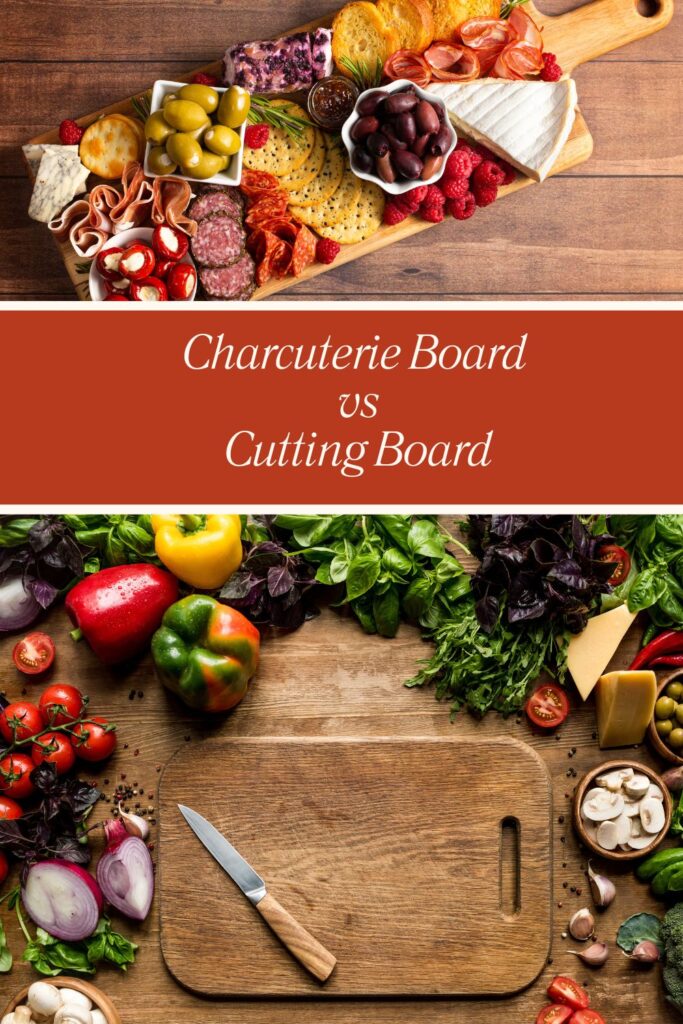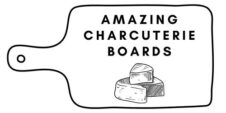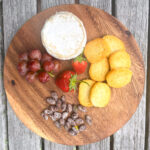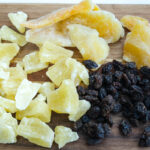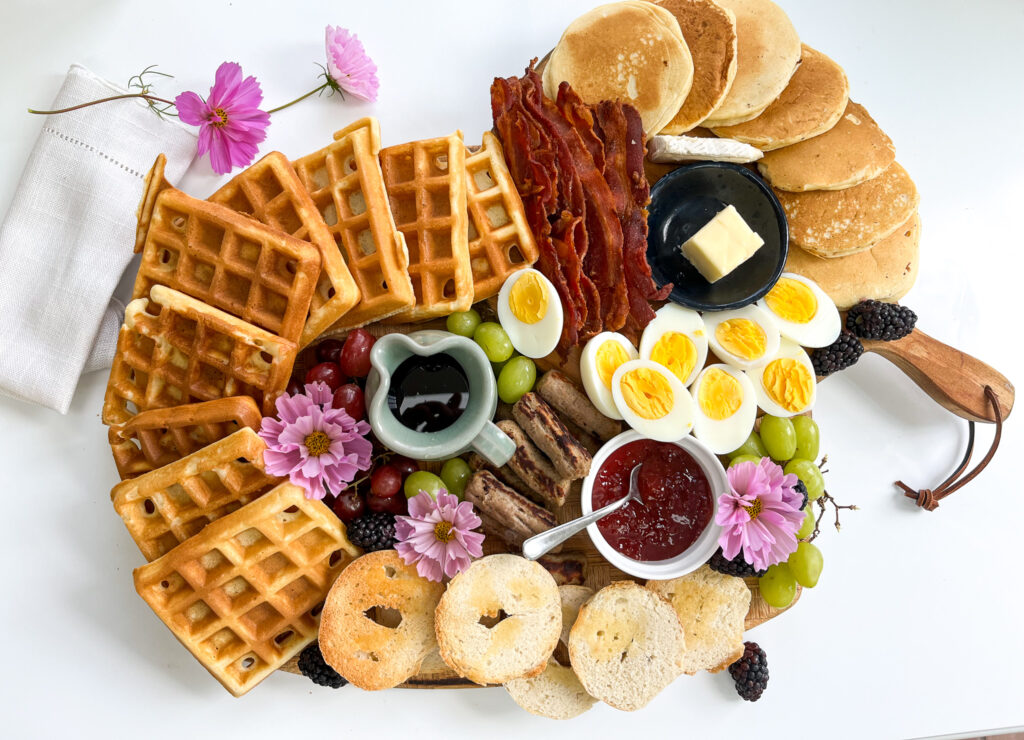You may be wondering what the difference is between a cutting board and a charcuterie board. The quick answer is that there are some differences, but they are often just the same boards used for different purposes. Below we’ll go into a quick explanation of the differences and similarities between the charcuterie board vs cutting board.
Knowing the differences can be useful in the kitchen and important for how to care for your boards.
You might also be interested in the History of the Charcuterie Board.
Contents
Charcuterie Board vs Cutting Board
The biggest different in a cutting board vs charcuterie board is how they are used, not the boards themselves. Charcuterie boards are used as a serving platter for food, while cutting boards are used to cut cheese, fruits, and other food items. As a result of the different ways the two boards are used, there are a few other important differences between the two. Here is a summary of the main differences and similarities between the two types of boards.
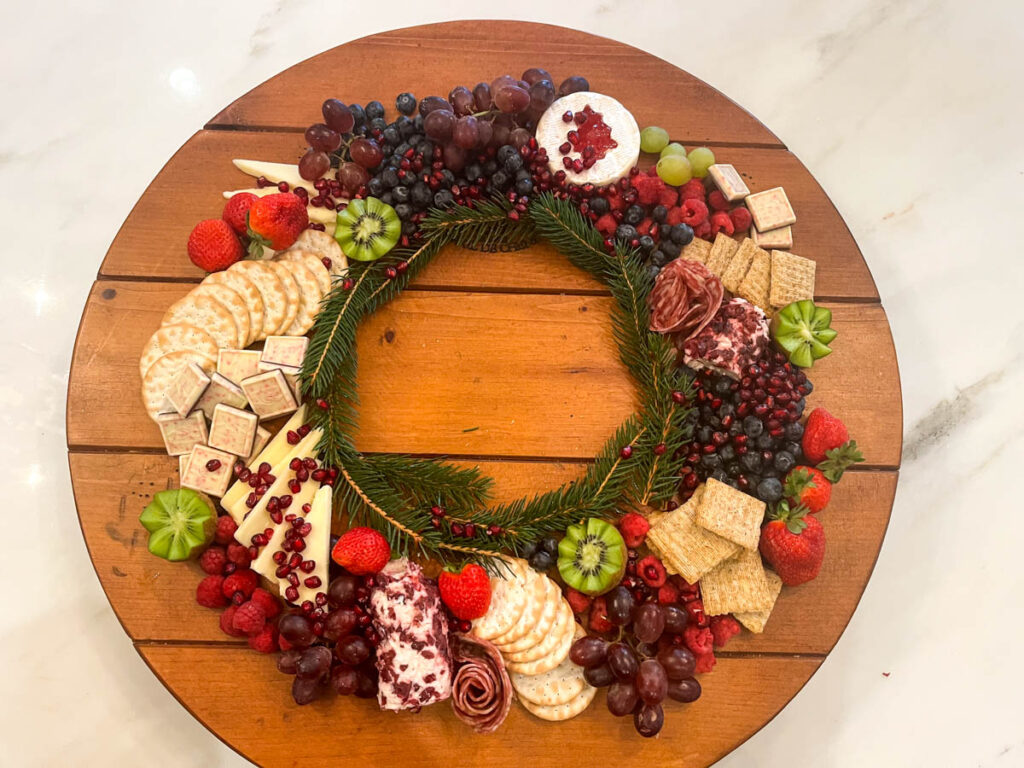
Similarities
- Material Options: Both can be made from wood, bamboo, marble, and other durable materials.
- Flat Surface: Both have a flat surface suitable for arranging or cutting food.
- Kitchen Use: Both are essential items in a kitchen, serving different purposes but often found in the same space.
- Maintenance Needs: Both require proper cleaning and maintenance to ensure longevity and hygiene.
Differences
- Primary Use: Charcuterie boards are for serving and presenting food, while cutting boards are for food preparation.
- Design and Aesthetics: Charcuterie boards are often decorative, whereas cutting boards are plain and functional.
- Materials and Construction: Charcuterie boards use aesthetically pleasing materials like slate or marble, while cutting boards focus on durability with materials like hardwood or plastic.
- Size and Shape: Charcuterie boards come in various decorative shapes and sizes, whereas cutting boards are usually rectangular and practical.
- Features: Charcuterie boards may include grooves and compartments for display, while cutting boards have practical features like juice grooves and non-slip feet.
- Durability: Charcuterie boards are less prone to knife marks and focus on appearance, while cutting boards are built for heavy knife use.
- Care and Maintenance: Charcuterie boards require gentle cleaning and occasional oiling, while cutting boards need regular, thorough cleaning.
- Purpose: Charcuterie boards are used for serving food at gatherings, while cutting boards are for daily food prep tasks.
- Mobility and Storage: Charcuterie boards are often portable and stored in dining areas, while cutting boards are typically kept in the kitchen.
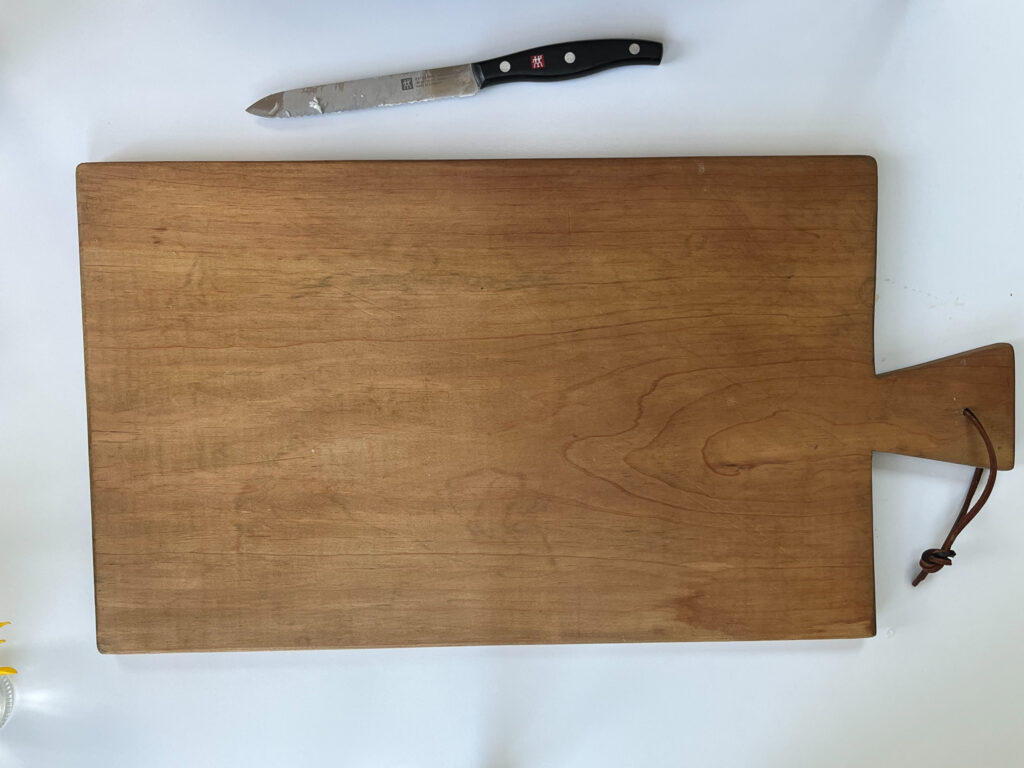
Exploring Charcuterie vs Cutting Boards
Below we’ll explore each of the similarities and differences in a bit more depth.
Primary Use:
A charcuterie board is primarily used for serving and presenting food, especially cured meats, cheeses, fruits, and other appetizers. In contrast, a cutting board is designed for food preparation, used for chopping, slicing, and dicing ingredients.
Design and Aesthetics:
Charcuterie boards often feature decorative elements, handles, and compartments for an attractive presentation. Cutting boards, on the other hand, are usually plain and functional, focusing on durability and utility.
Materials and Construction:
Charcuterie boards may use a wider variety of aesthetically pleasing materials like slate or marble, and decorative wood. Cutting boards are typically made from materials that can withstand knife cuts, such as hardwood, plastic, or bamboo.
Size and Shape:
Charcuterie boards come in various shapes and sizes, often larger and more decorative. Cutting boards are available in various sizes but are usually rectangular and designed to fit comfortably on a kitchen counter.
Features:
Charcuterie boards might include grooves for holding food, compartments, or a specific design for display. Cutting boards, however, feature practical elements like juice grooves, non-slip feet, and thickness for kitchen tasks.
Durability:
Charcuterie boards are less prone to knife marks and may be more delicate, focusing on appearance. Cutting boards are built to endure heavy knife use and frequent washing.
Care and Maintenance:
Charcuterie boards require gentle cleaning and occasional oiling, especially if made from wood, to maintain appearance. Cutting boards need regular cleaning and more intensive maintenance to prevent cross-contamination and wear from knife use.
Purpose:
Charcuterie boards are used primarily for serving food in a visually appealing manner during gatherings or events. Cutting boards are essential for daily food preparation tasks in the kitchen.
Mobility and Storage:
Charcuterie boards are often portable and used as serving trays, sometimes stored in dining areas. Cutting boards are typically stored in the kitchen, easily accessible for food prep activities.

Features and Characteristics
- Charcuterie Board
- Decorative aspects.
- Additional features (handles, grooves, compartments).
- Cutting Board
- Durability and resistance to knife marks.
- Features for stability (non-slip feet, juice grooves).
Care and Maintenance
Charcuterie Board
Cleaning and maintaining a charcuterie board involves gentle care to preserve its aesthetic appeal. After each use, it’s best to hand wash the board with mild soap and warm water, avoiding prolonged soaking to prevent warping or cracking. For wooden charcuterie boards, periodic oiling with food-safe mineral oil or beeswax helps maintain the wood’s luster and prevent it from drying out. Additionally, to preserve the board’s beauty and hygiene, avoid cutting directly on its surface with sharp knives and use it primarily for serving rather than food preparation.
Cutting Board
Proper cleaning methods for a cutting board are essential to ensure food safety and extend its lifespan. After each use, clean the board thoroughly with hot, soapy water and rinse well. For deeper cleaning, especially after cutting raw meat, use a mixture of water and vinegar or a mild bleach solution to disinfect the board. To maintain a wooden cutting board, regular oiling with food-grade mineral oil keeps the wood from drying out and cracking. Avoid cross-contamination by using separate boards for different types of food (e.g., meats, vegetables) and ensure the board is completely dry before storing it to prevent bacterial growth.
Find lots of ideas for your next charcuterie board over on INSTAGRAM.
